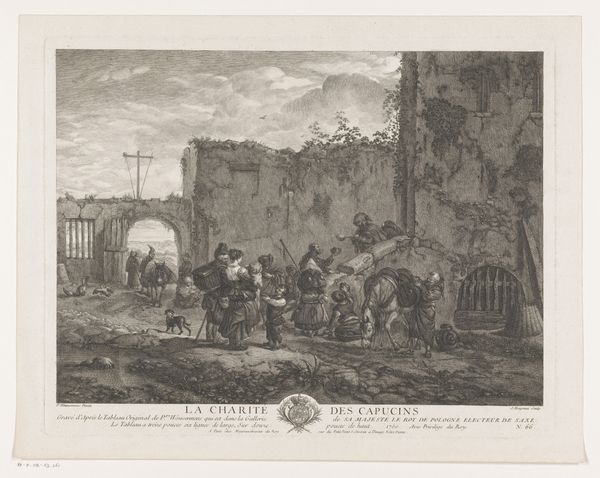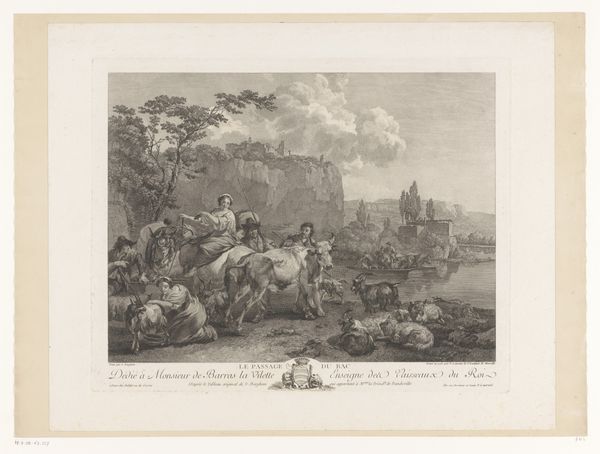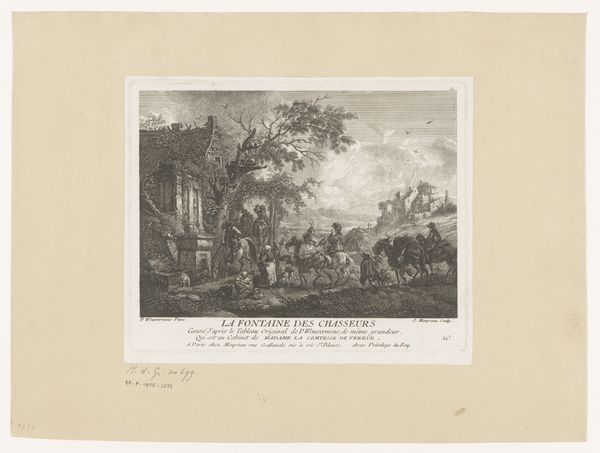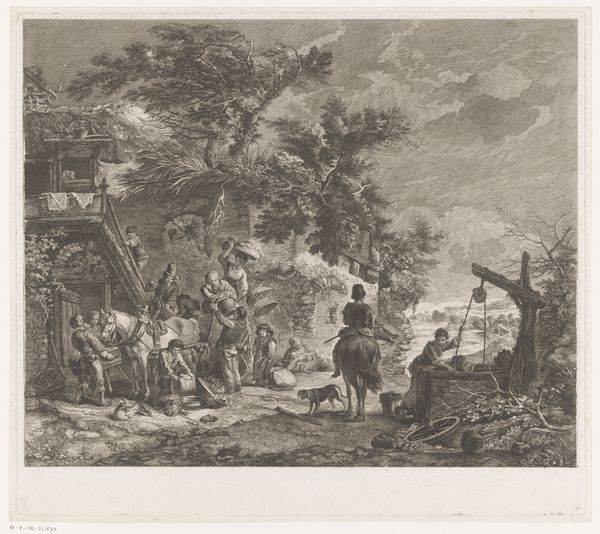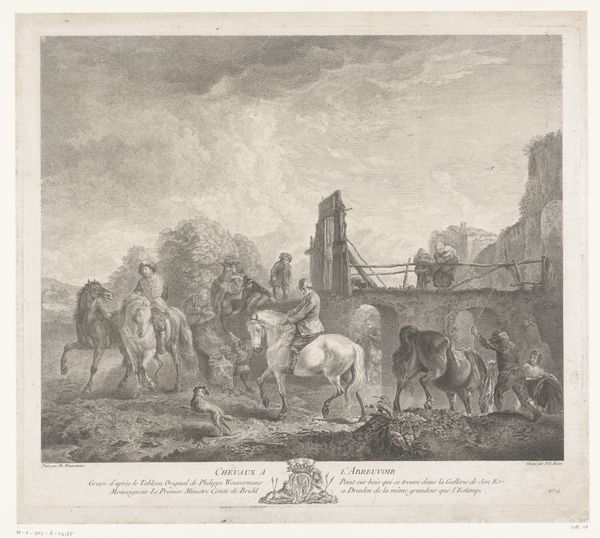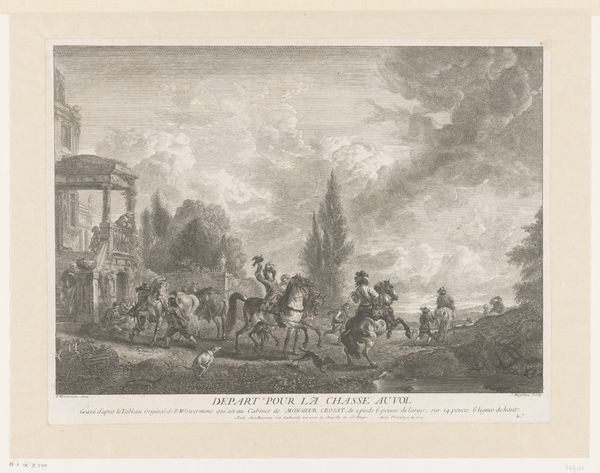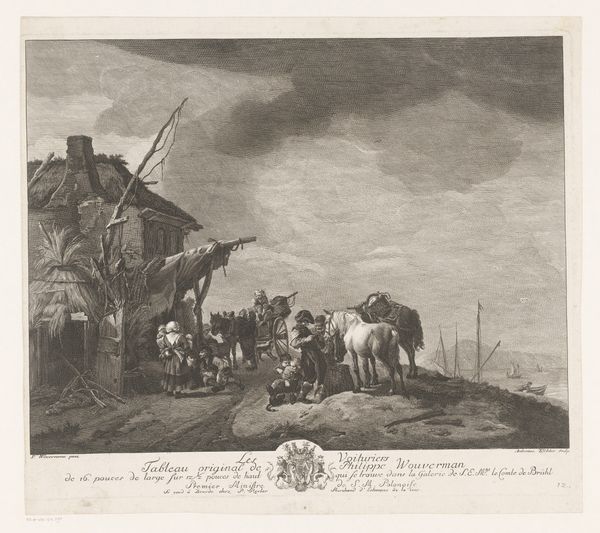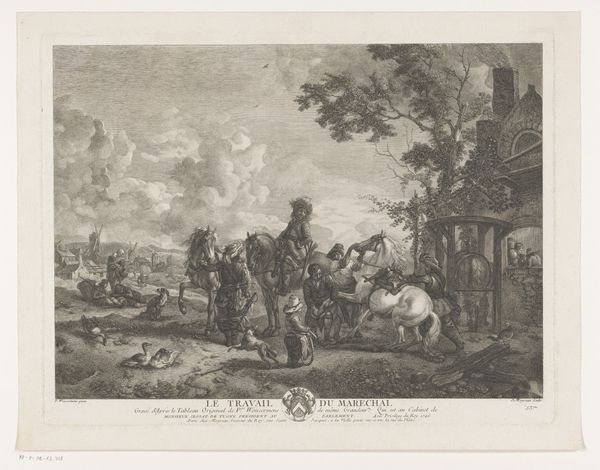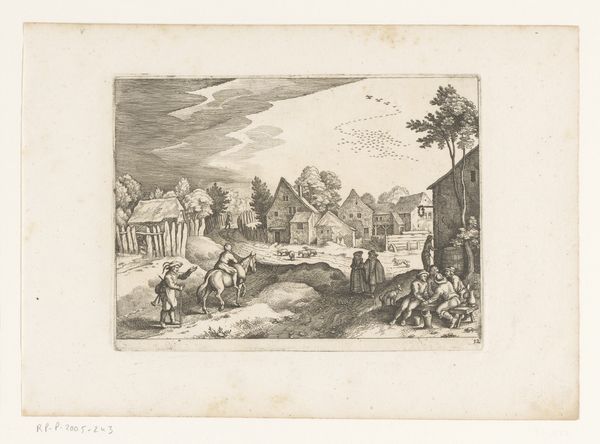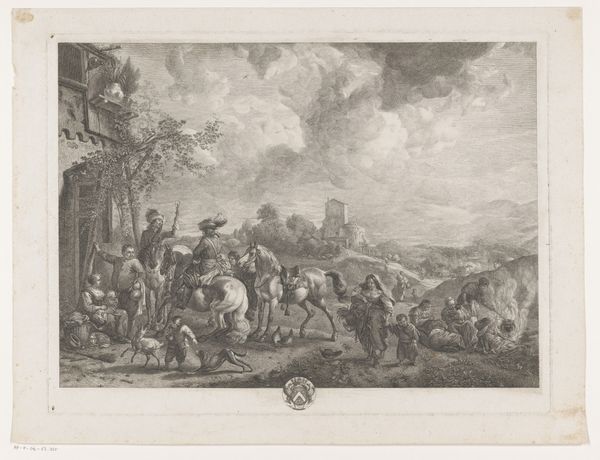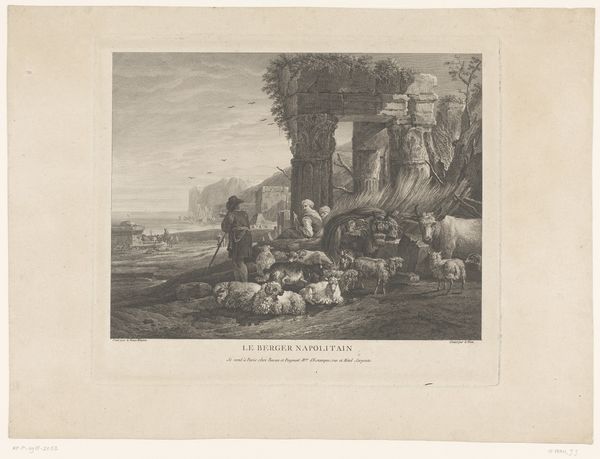
print, etching
#
baroque
# print
#
etching
#
landscape
#
figuration
#
horse
#
genre-painting
Dimensions: height 360 mm, width 475 mm
Copyright: Rijks Museum: Open Domain
Curator: Looking at this print, “Hooiverkoper voor een huis” or “Hay Seller Before a House,” made in 1741 by Jean Moyreau, one is immediately struck by the scene’s sense of casual disarray. Editor: Absolutely. There’s a performative aspect to that disorder though. It’s meticulously crafted, you know? See how the composition invites us to question the narratives being depicted here: Who holds power and privilege? It’s not simply a bucolic scene, is it? Curator: Precisely. This etching offers insight into the social history of the time. Think about the way representations of labour, specifically agricultural work, played out in the 18th century. These scenes were often romanticized for consumption by wealthier audiences. Editor: I wonder then how this image intersects with notions of identity and class. We see figures scattered throughout – some working with the hay, others resting, perhaps even begging near the building in the background. There's a whole hierarchy implied within that space. Curator: You're right, the relationships between figures are complex, raising questions of dependency and agency. And how does Moyreau, as an artist working within a particular social structure, influence the narrative? Editor: These kinds of depictions of poverty are really powerful, they speak to socio-economic imbalances still felt today, although filtered and repackaged for very different viewing practices, it seems to me, perhaps co-opting a moment of suffering for consumption and financial benefit of the institution and its collectors. Curator: That is a great point to make in our dialogue: How these kind of imbalanced power dynamics influence display decisions, as much then as today. It’s also compelling to consider where the line is between simply observing and actively commenting upon a particular society, as artists. Editor: And to wonder whether any image is 'simply' observation or whether it’s inevitably bound to the political dimensions of its creation. Curator: Right. It reminds me that we must actively investigate how such works reinforce certain systems or if, somehow, they give voice to marginalized groups through subversive representation. Thank you for adding these important angles. Editor: Thank you too! This discussion makes me even more conscious of art’s role within culture – shaping perception and power in ways both evident and subtle.
Comments
No comments
Be the first to comment and join the conversation on the ultimate creative platform.

